The Entrepreneurial Spirit Thrives in the Amazon River Basin
by Deborah D. Hoover
In January 2019 , a group of 36 Williams College graduates, spouses, and friends enjoyed a weeklong trip in the Amazon River basin, accompanied by classmate, Dr. Meg Lowman, an expert in the biodiversity of rainforest canopies. We had the opportunity to navigate a rainforest canopy walk near Perdida Creek with Meg, and experience firsthand the biodiversity of plants, animals, and insects that live in the treetops. After embarking from the City of Iquitos, we stopped at small villages along the rivers and observed the entrepreneurial spirit in action, and the villagers' desire to live in harmony with the natural world.
, a group of 36 Williams College graduates, spouses, and friends enjoyed a weeklong trip in the Amazon River basin, accompanied by classmate, Dr. Meg Lowman, an expert in the biodiversity of rainforest canopies. We had the opportunity to navigate a rainforest canopy walk near Perdida Creek with Meg, and experience firsthand the biodiversity of plants, animals, and insects that live in the treetops. After embarking from the City of Iquitos, we stopped at small villages along the rivers and observed the entrepreneurial spirit in action, and the villagers' desire to live in harmony with the natural world. 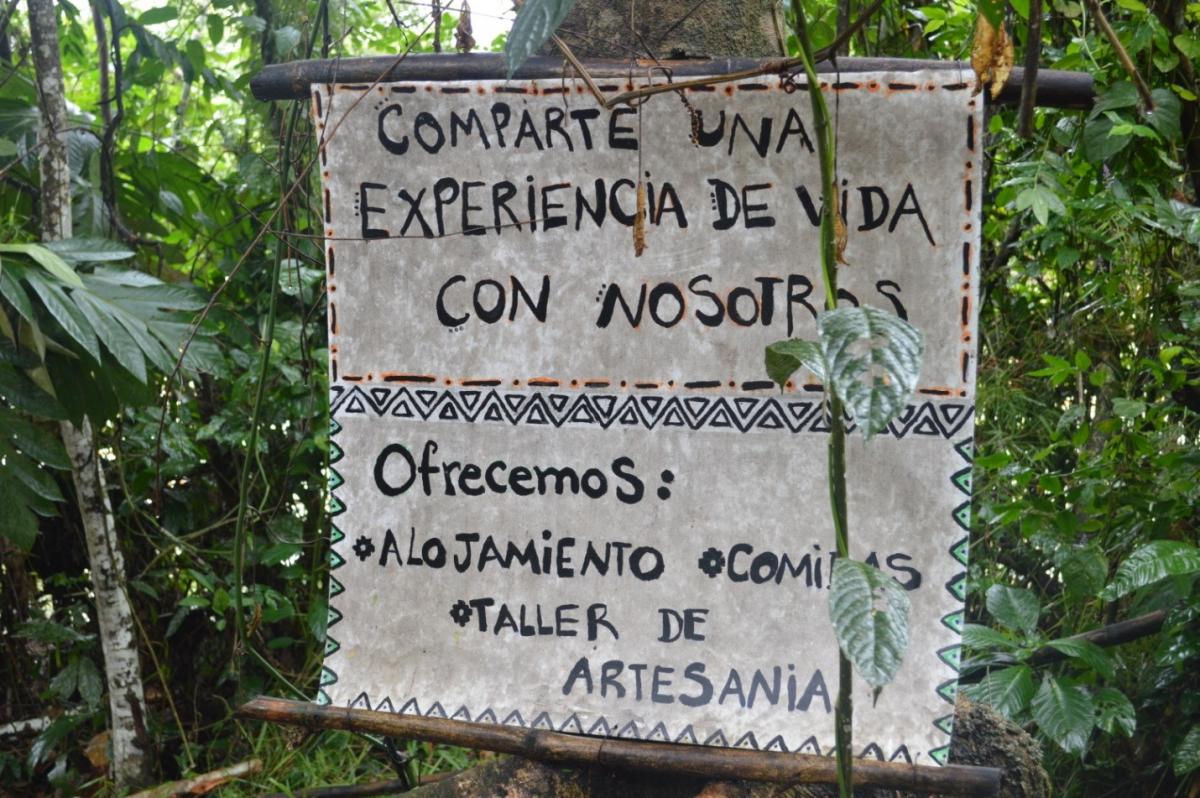
Our travels took us along the Amazon River in Peru, as well as the Marañón Ucayali, and other smaller tributaries. The tiny, bucolic villages that hug the riverbanks support small populations of residents—sometimes fewer than 100 people living together in close knit communities. Village residents of Puerto Prado for example, make collective decisions about their operations, headed up by Ema Tapullima, who leads her village, helps to resolve disputes, cooks, weaves baskets, and advocates for her community at a national level. Members of the Cocama-Cocamilla people reside in Puerto Prado, a small community of fewer than twenty indigenous families, many engaged with the care and education of visitors like us who seek to understand the Amazon basin ecosystem and its way of life. A 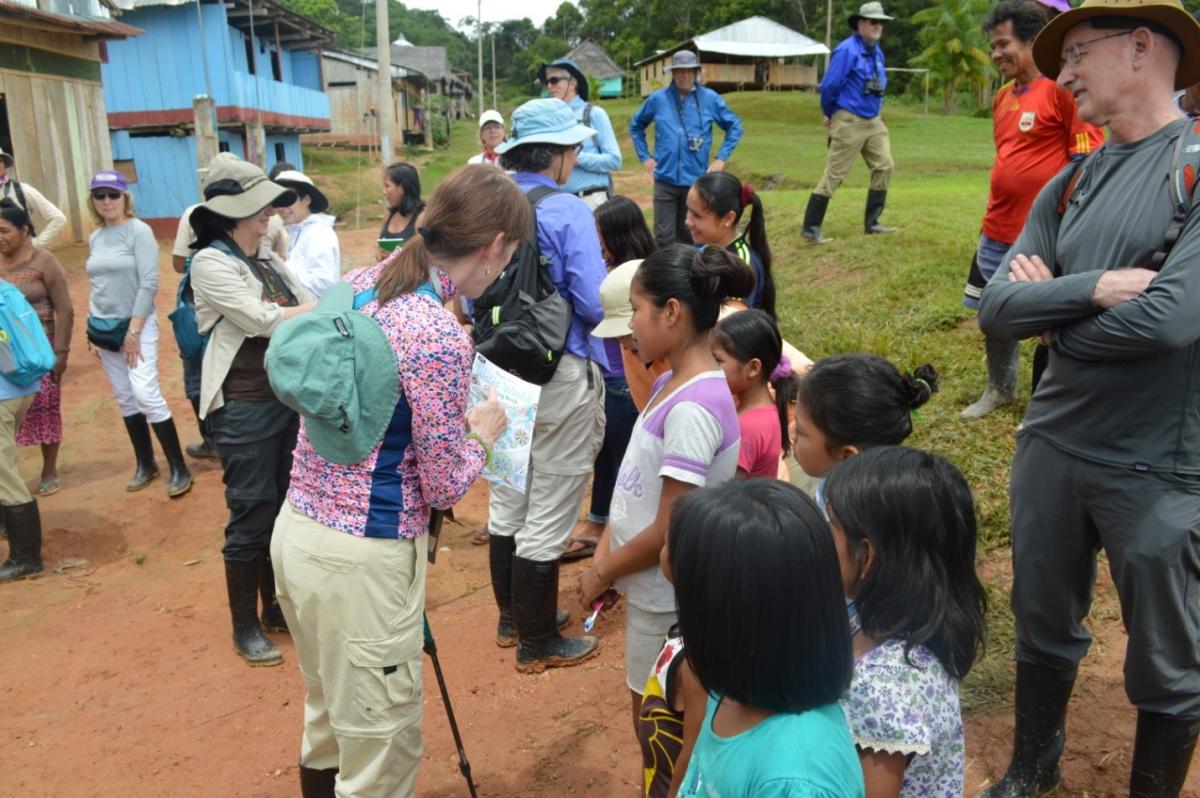 sign greeting visitors as they enter the village reads, "Share an experience of life with us - We offer Lodging Meals Artisans Shop."
sign greeting visitors as they enter the village reads, "Share an experience of life with us - We offer Lodging Meals Artisans Shop."
Villages located along the rivers are relatively self-sufficient, although the Peruvian government provides education for children in small brightly-colored schoolhouses until children reach their early teens. The schools possess only basic teaching materials prompting our group to bring along gifts—pencils, paper, crayons, and books—for the students living in Puerto Prado. Grateful faces greeted us 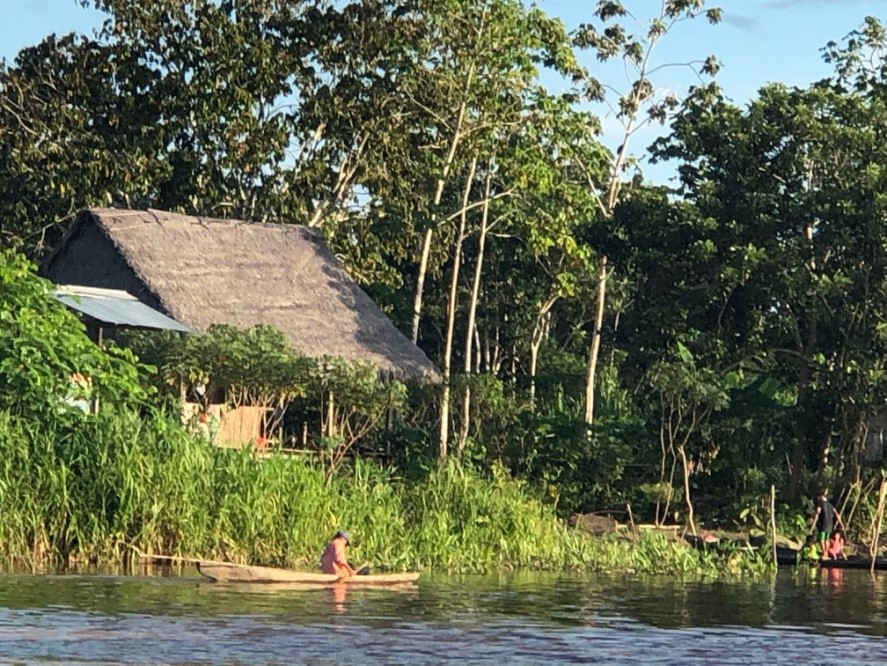 as we distributed these supplies into their eager hands.
as we distributed these supplies into their eager hands.
It was the summer holiday period when we visited these villages and we observed groups of curious, happy children exploring their villages laughing, scampering among the trees, and often boating with their parents and siblings in dugout canoes.
Children who wish to pursue secondary or university education must move elsewhere, often to the large Amazonian city of Iquitos (meaning surrounded by water), humming with almost one half million residents, the largest city in the world inaccessible by roadway. Indeed, the naturalist guides who skillfully escorted us through a sampling of these villages shared the stories of their lives as children, growing up barefoot in remote villages, but ultimately making the decision to move to pursue higher education, and equip themselves to translate the wonders of the Amazonian jungle for the fortunate visitors seeking to appreciate the many reasons the Amazon ecosystem must be preserved as a teeming crucible of biodiversity.
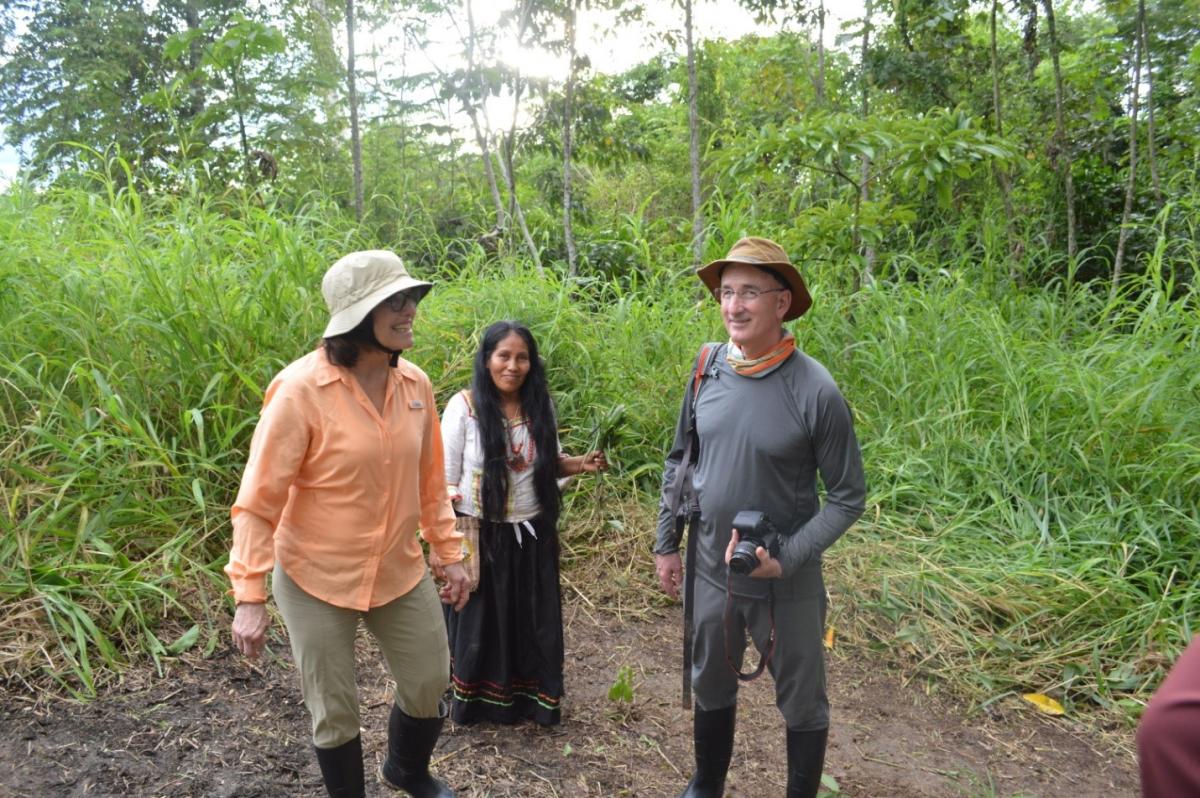 Routine medical care in the villages has its origins in the forest. Care is provided by the local shaman, a villager who is viewed as possessing special powers and has gained extensive experience through apprenticeship to an elder shaman to absorb all the richness of the remedies the Amazonian jungle yields. The lengthy educational process requires the shaman-in-training to spend many years living half the year in the jungle learning the medicinal healing powers of plants and insects. There is also a powerful spiritual element to the shaman’s work as she calls upon good energy to aid in the healing process. We met Carola at San Regis, a village along the River Marañón River where Carola tends to the medical and psychological needs of nine communities, although serious injuries like broken bones necessitate a long trip down river to medical facilities in Iquitos or the smaller city of Nauta. Carola treated members of our group for baldness, knee pain, arthritis, sinusitis, and shoulder pain.
Routine medical care in the villages has its origins in the forest. Care is provided by the local shaman, a villager who is viewed as possessing special powers and has gained extensive experience through apprenticeship to an elder shaman to absorb all the richness of the remedies the Amazonian jungle yields. The lengthy educational process requires the shaman-in-training to spend many years living half the year in the jungle learning the medicinal healing powers of plants and insects. There is also a powerful spiritual element to the shaman’s work as she calls upon good energy to aid in the healing process. We met Carola at San Regis, a village along the River Marañón River where Carola tends to the medical and psychological needs of nine communities, although serious injuries like broken bones necessitate a long trip down river to medical facilities in Iquitos or the smaller city of Nauta. Carola treated members of our group for baldness, knee pain, arthritis, sinusitis, and shoulder pain.
As the shaman performed her healing rituals, our attention was diverted to a couple of trees next to the temple. Here a pair of pygmy 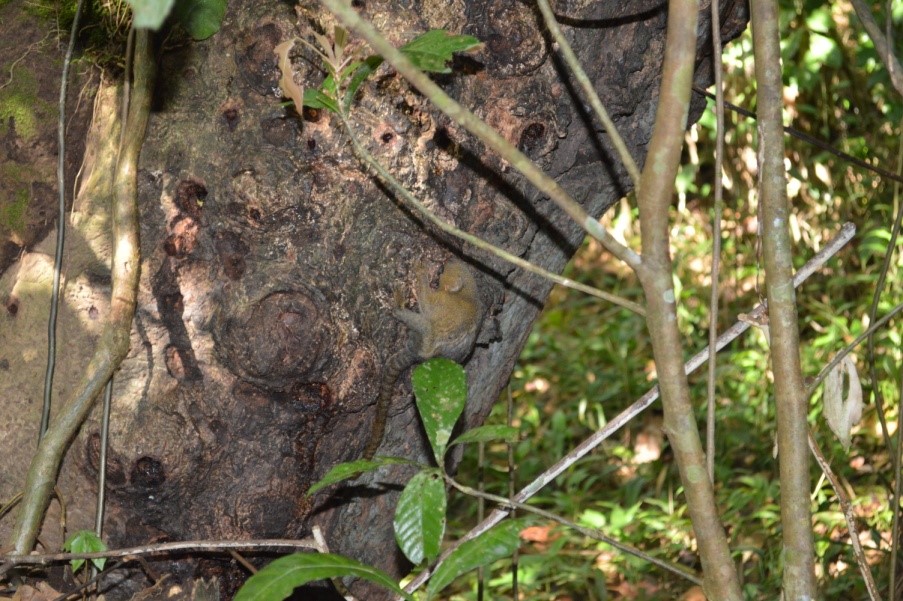 marmosets, smallest breed of monkey in the world, was playing hide and seek, gingerly maneuvering up and down the nubby tree bark. It was this type of serendipitous magic that characterized our journey.
marmosets, smallest breed of monkey in the world, was playing hide and seek, gingerly maneuvering up and down the nubby tree bark. It was this type of serendipitous magic that characterized our journey.
The villages we visited were bustling with activity. It seems everyone possesses the entrepreneurial spirit. Villagers were busy fishing, tending crops, and making handicrafts to sell to visitors. In the village of Vista Allegre we met two women who are social entrepreneurs. They have built a sanctuary to raise butterflies, some released into the confines of a protected 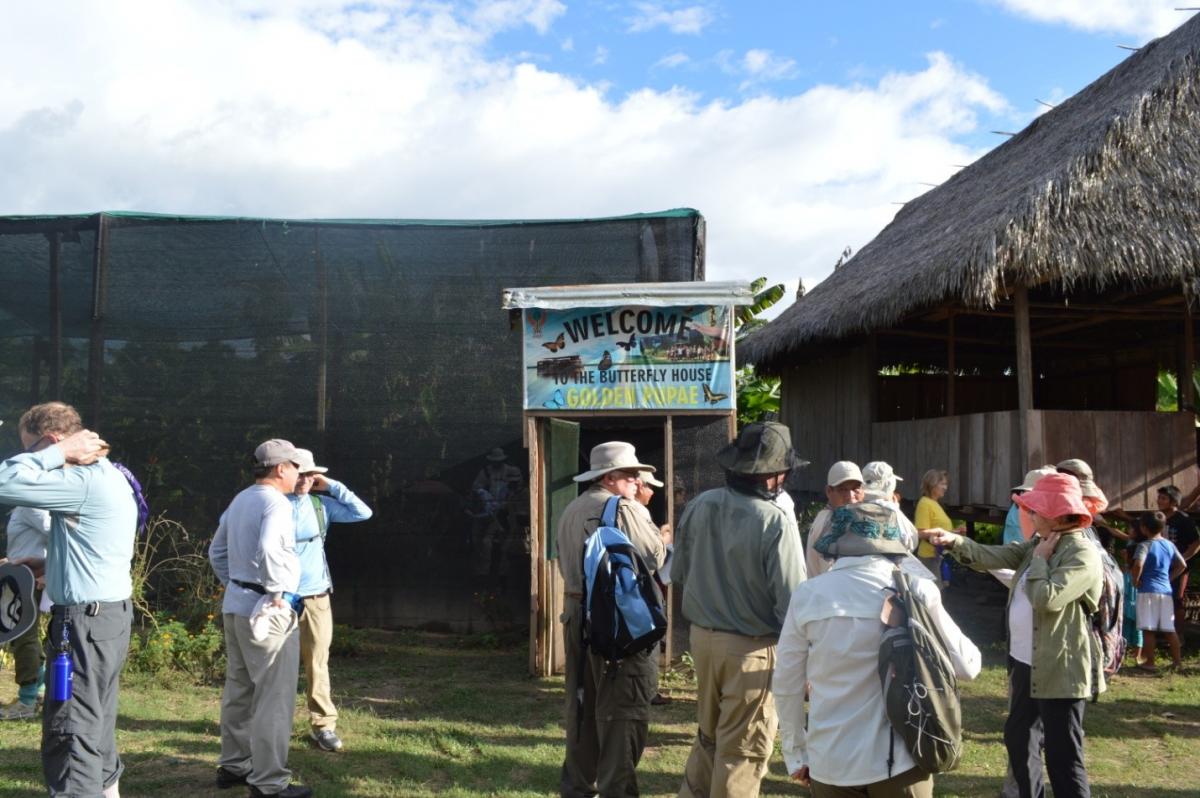 butterfly habitat and some released into the wild. The Peruvian government has provided some funding for this endeavor, and we as a group left a contribution to aid in their grassroots efforts to protect and perpetuate Amazonian species.
butterfly habitat and some released into the wild. The Peruvian government has provided some funding for this endeavor, and we as a group left a contribution to aid in their grassroots efforts to protect and perpetuate Amazonian species.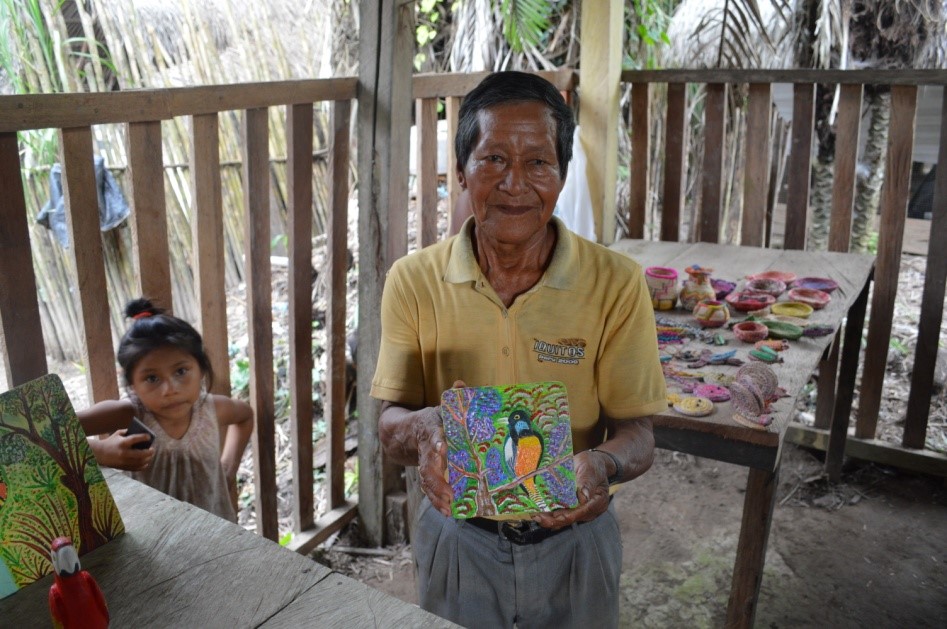
All along the rivers we met enterprising people selling their handiwork. Children on summer holiday were often by their parents’ side observing the industry of their elders selling their creations and products to travelers along the river or to shoppers in the city market.
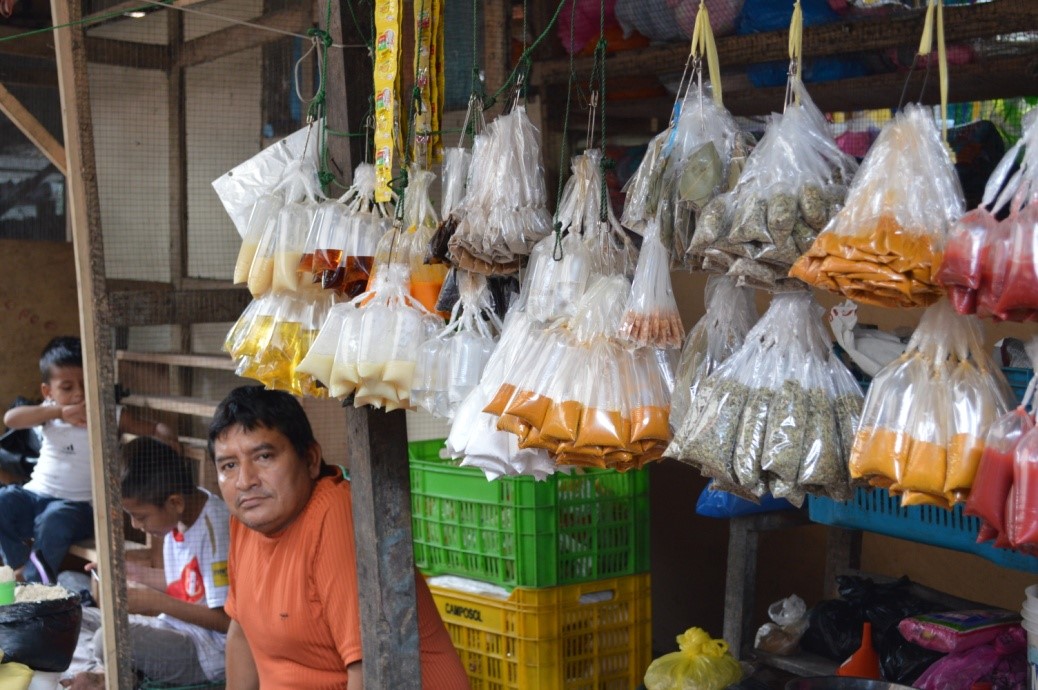 In Iquitos, the streets are filled with auto rickshaws, an open three-wheeled vehicle that is half motorcycle, half utility truck. Thous
In Iquitos, the streets are filled with auto rickshaws, an open three-wheeled vehicle that is half motorcycle, half utility truck. Thous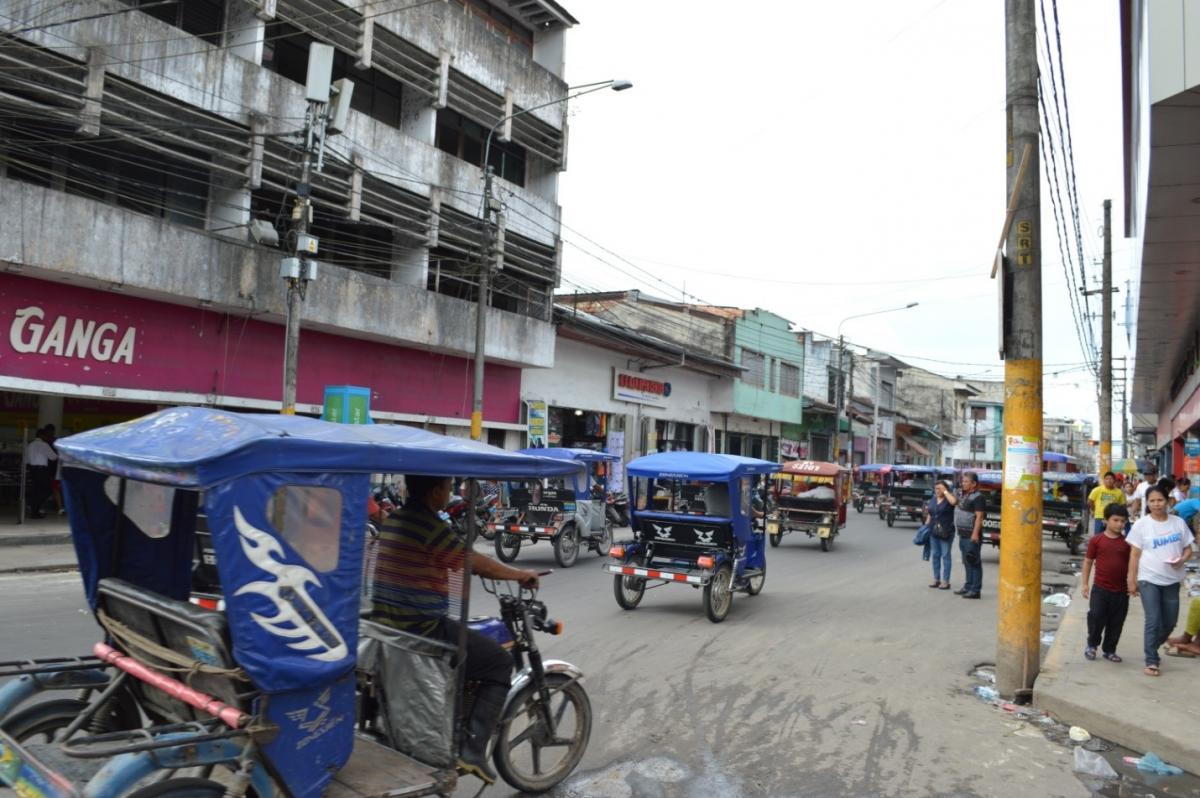 ands of these vehicles buzz around the crowded Iquitos streets carrying all manner of produce and products, often destined for sale in the gritty Belén Market.
ands of these vehicles buzz around the crowded Iquitos streets carrying all manner of produce and products, often destined for sale in the gritty Belén Market.
In the outdoor Belén Market we met an industrious woman who sells chicken in the open air. She is supporting her family by bringing in 200 Peruvian soleils per market day or the equivalent of about 65 US dollars. She beamed as our 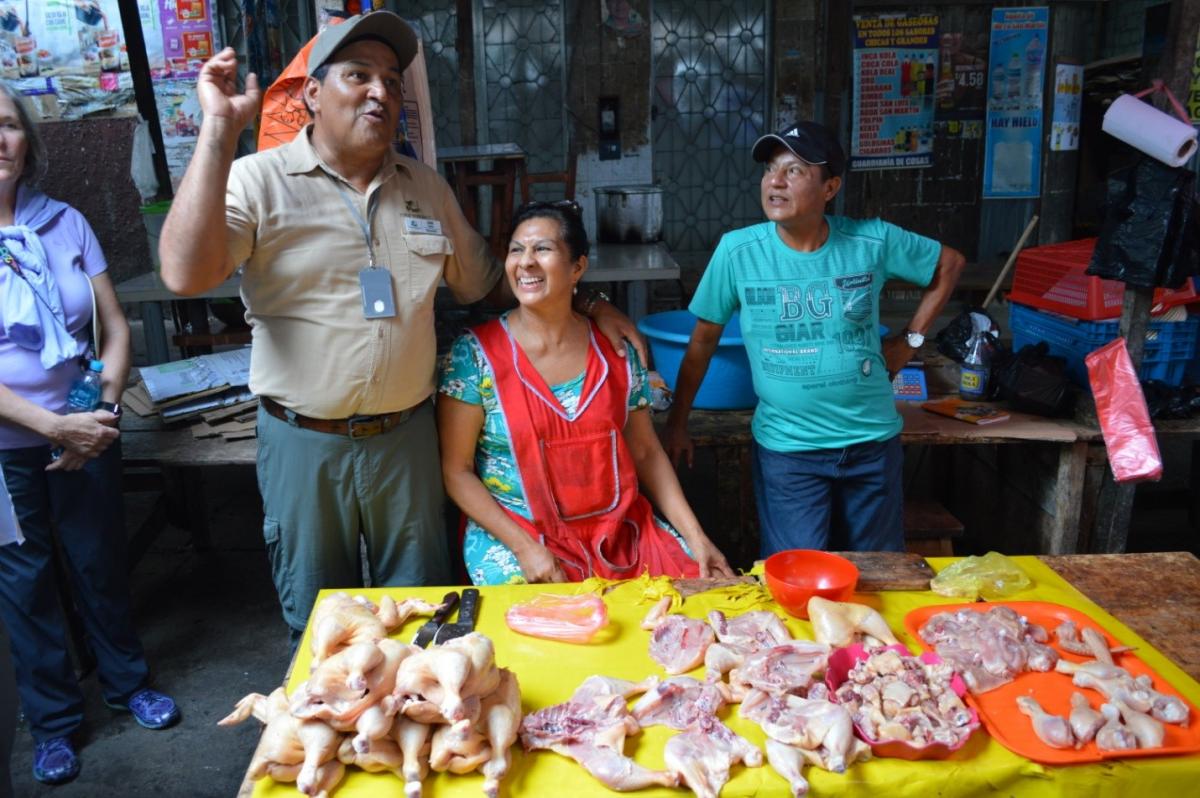 guide bragged about the success of her small business. She lives in a low lying area of Iquitos where small closely packed houses float on the rising waters of the river during the rainy season. The Belén Market also features fresh fish, medicinal products, jungle fruits, caiman meat, and many other unusual products sourced on the rivers and in the jungle.
guide bragged about the success of her small business. She lives in a low lying area of Iquitos where small closely packed houses float on the rising waters of the river during the rainy season. The Belén Market also features fresh fish, medicinal products, jungle fruits, caiman meat, and many other unusual products sourced on the rivers and in the jungle.
Throughout our journey we observed the resourcefulness and warmth of Amazonian villagers. They are living sustainably and lightly on the earth and are fully cognizant of the breadth of biodiversity in the jungle just outside their communities. Their way of life depends 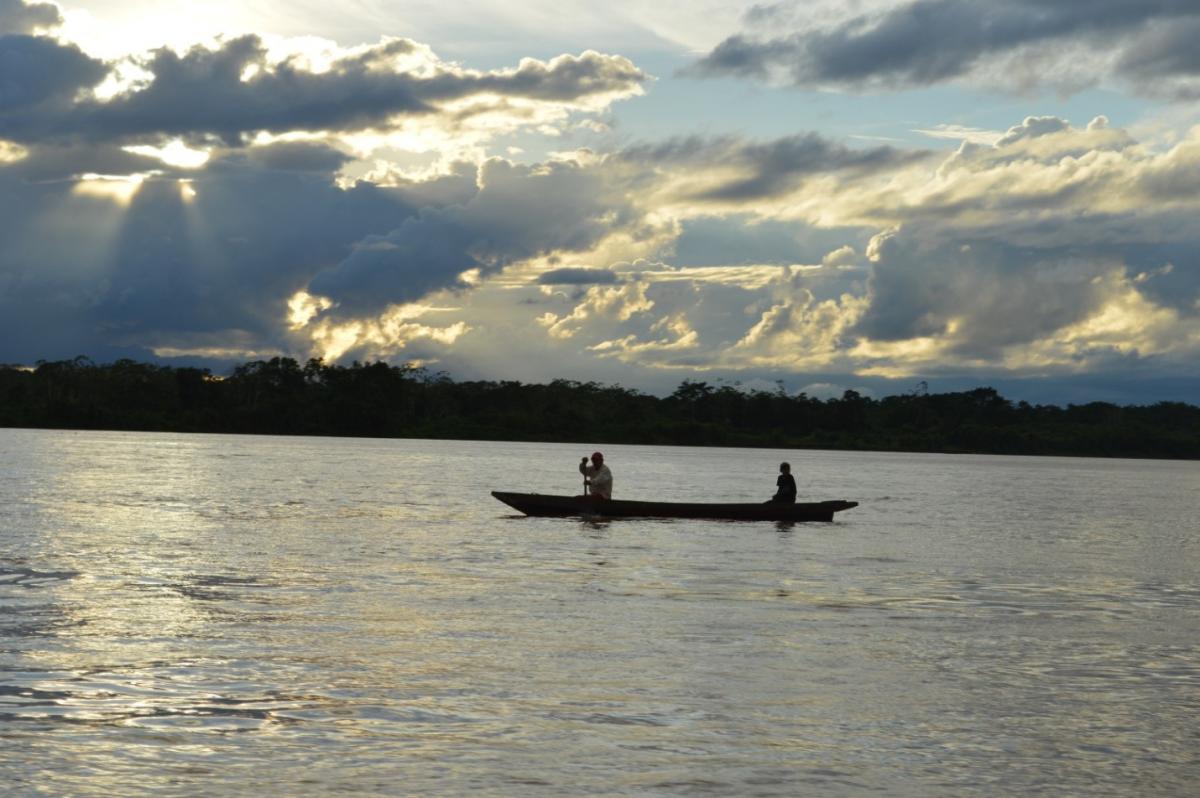 on the life inherent in that jungle ecosystem—and so do the lives of those who reside on the rest of our planet.
on the life inherent in that jungle ecosystem—and so do the lives of those who reside on the rest of our planet.
Main photo (round): Deborah and John Hoover with Dr. Meg Lowman on Tree Canopy Walk near Perdida Creek (Marañón River)
Photo one: Williams College explorers at Vista Allegre
Photo two: Greetings at Puerto Prado: "Share an experience of life with us - We offer lodging meals artisans shop"
Photo three: School children in Puerto Prado on the Marañón River
Photo four: Huaysi Village on the Tahuayo River
Photo five: San Regis, where we planted trees and had a session with the Village Shaman
Photo six: Pygmy Marmoset
Photo seven: Butterfly House, Vista Allegre
Photo eight: Artisans Shop, Vista Allegre
Photo nine: Belén Market, Iquotos
Photo ten: Street scene, Iquitos
Photo eleven: Belén Market, Iquitos
Photo twelve: River scene near Huaysi
© 2019 Deborah Hoover (article and photos)
